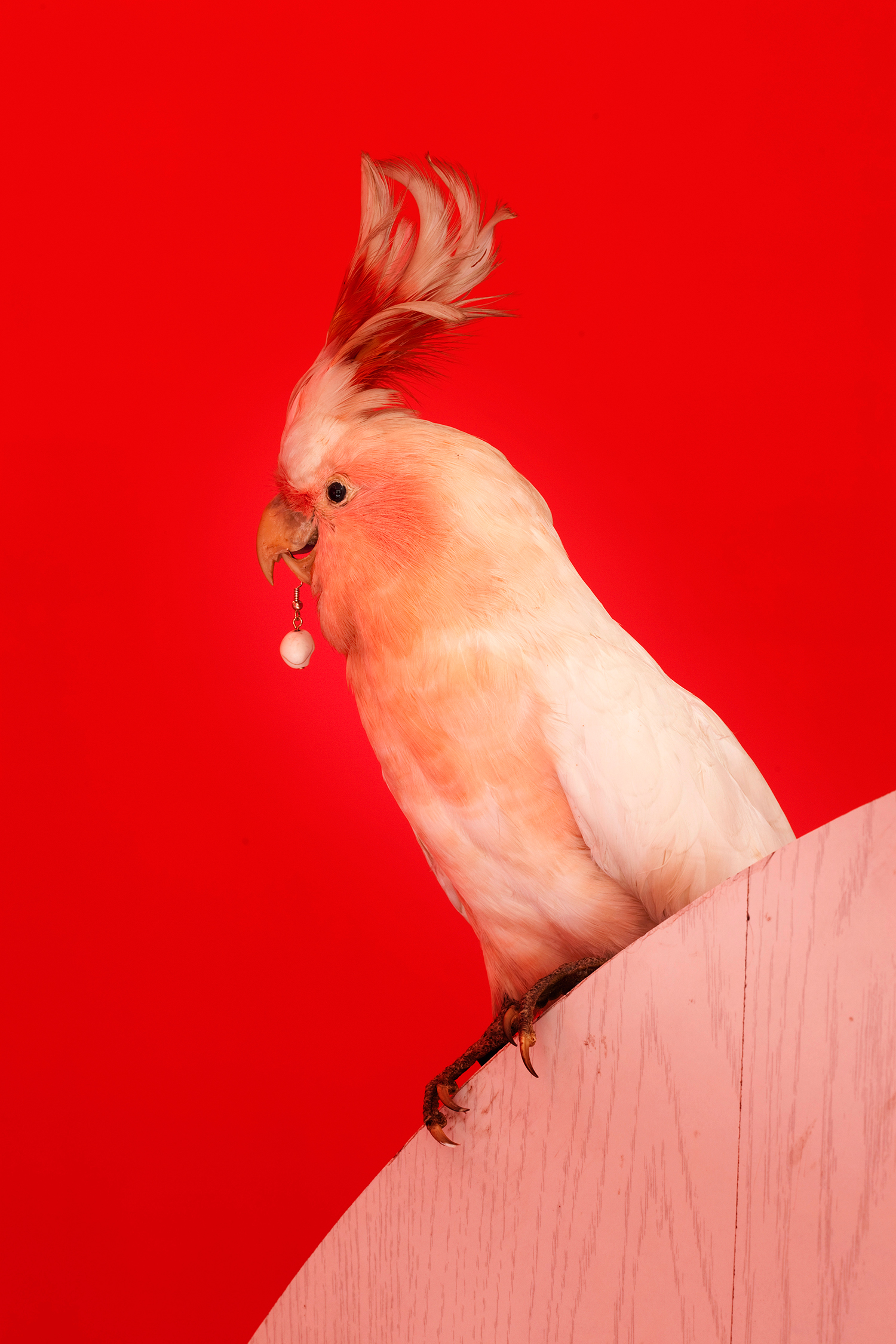Following Andy Warhol
The first thing a visitor to ArtStack sees is the line, “We want people to see more art.” It’s followed by a simple explanation of how to use the site: 1) Stack art you like, 2) Follow people to see their stacks and 3) Discover more art you love (emphases in the original). Below these directions are thumbnails of artworks: an “unknown” by Marcel Duchamp (5,168 followers, most of whom probably recognize the “unknown” work as Bicycle Wheel, 1913) beside Robert Delaunay (1,351 followers) and a neon piece by contemporary sculptor Nathaniel Rackowe (1,567 followers).
The past five years or so have seen a proliferation of online platforms for the presentation and sale of art. The goal of this article is not to survey these — a superfluous effort, especially in print — but rather to assess what these new spaces offer, how they are used and what kind of contribution they can make. Though these sites are all different, they have more in common than not, and that commonality is found through use: through the act of browsing, specifically. Almost every site — Artsy, Artspace, Paddle8, Artuner, collectionof: and Curiator, to name a few — prominently include a “browse” button. Their designs are all geared toward thumbnails of images. Whether or not a company is intent on selling work or displaying it, it’s safe to assume that most users mainly browse work rather than buy; galleries have clearly picked up on that, too. In response to a survey about these platforms, the way they are used and discussed, facilitated by Flash Art in preparation for this article, gallerist Marco Altavilla (T293, Naples/Rome) said: “I use some of them, but only as a way to increase the online visibility of the artists we represent.”
What do we do with this deluge of images? How is this browsing different from scrolling down something like Contemporary Art Daily, which provides installation views of gallery shows from around the world? The answer that some platforms have come up with is curating and collecting these images. That is ArtStack’s goal: to encourage people to collect images using a personal profile while emulating social media gestures — following, liking, and so on. That’s also what the not-very-active collectionof: is trying to do, though, unlike ArtStack, it looks more toward the larger web by including a bookmarklet that allows a user to add images to collectionof: from any website. Artsy also includes a collecting tool; it’s a very user-oriented site, which can be explained by the fact that it has a different financial model (it charges galleries for inclusion on the site) than companies like Artspace and Paddle8, both of which work on commission, be it via sales (Artspace) or auctions (Paddle8). Artsy also sports a share button, an attractive feature since, if used, it would mean Artsy could claim a reach much larger than the site’s metrics.
Sharing, collecting, curating: all of these promoted activities are an attempt to provide a response to an inherent problem on the socially oriented web — that browsing images online is mostly a solitary activity. And this may have repercussions: in response to Flash Art’s questions, art advisor Heather Flow warns that “browsing jpegs and articles online has mostly been confined to one person with one computer — an asocial experience very different from reading in a library or walking through a physical exhibition. In my opinion, discourse leads to diversity and growth, and lack of discourse leads to homogeneity and stagnation.” The introduction of social media attributes — Share! Follow! — is possibly a losing battle (it seems futile to “follow” a dead artist) against the homogeneity of these platforms, which are largely populated by minor works from major artists or editions (or minor editions by major artists). Still, we should all hope that the social-web aspects of these sites do succeed, since that is one of their major promises to those of us who are not new collectors — the user base that most of these platforms are eyeing.
 You keep using that word. I do not think it means what you think it means.
You keep using that word. I do not think it means what you think it means.
The language of the aforementioned activities is worth spending time on: collecting, curating. What does it mean to curate a selection of JPEGs? Of course, there is an ongoing conversation about the way the verb “to curate” has been so overused that it has now been demoted to the adjective “curated” (as in “curated wine list” and “curated experience”), but on these platforms, curating is closer to the verb form. If an institutional curator has an ArtStack account, in which he or she shares their research with the public, is that not part of their curatorial project? One of the promises of platforms like these is in this expansion of the idea of what curating online is. It can be done for profit: the idea behind Artuner, for example, is to display online exhibitions (“curations,” in the site’s lingo) curated by a number of outside contributors. A viewer can see the exhibition either as a series of thumbnails or in a pretty unsophisticated virtual gallery, complete with a modernist, Knoll-like bench, cement “floors” and a white wall. There isn’t an option to drag your cursor in order to move through the gallery, but rather, the user has to click on right and left pointing arrows. (Artsy has a similar feature called the “digital room,” only there the bench is wooden, the floor looks like linoleum, and the scale is so off that a small print is barely viewable.)
While trying to replicate the white cube online has never been very successful, Artuner’s focus on curating seems spot on. There is no reason to avoid the terminology we have come up with in order to talk about art. But that is what ArtStack does, and, in this case, the language defines the platform. Can you imagine if it were “ArtPile”? “Click here to pile this artwork!” Pinterest did that, adopting the verb “to pin” in order to classify what the company sees as a singular activity — saving images to a virtual bulletin board. Even if it worked for Pinterest, “stacking” shouldn’t be the contemporary art version of “pinning,” particularly because contemporary art is a discipline that spends much time on the ramifications of the use of language. On ArtStack, you can explore (that is, browse) works according to “type” rather than medium: the types, however, do fall under accepted rubrics of more or less recent art history: painting, photography, sculpture, performance, video, installation, drawing, print, architecture, design, net art, book, collage. You can browse by medium (and yes, they call it medium) on other sites, too: Artsy, Artspace and Paddle8 all support medium-specific filters. These searches not only give sites usable information about what people are interested in and when, but they also allow users to rethink medium-specificity (should a digital video meant for web viewing be classified as “digital art,” “net art” or “video”?) and to comment on it in real time.

The algorithm
The medium filter is also interesting because of the way it is created on different platforms. How are works tagged? Via crowdsourcing, employing a team of experts, or, in the case of Artsy, feeding this information (tags that relate to subject matter, historical movement, formal attributes) to an algorithm the company calls The Art Genome Project. Loosely inspired by Pandora’s Music Genome Project, in which a team of experts classified songs according to their musical details, matching artists and songs to create a system that recommends new songs based on an artist or song the user likes, Artsy’s Art Genome Project — described on the company’s About page as the “classification system and technological framework that powers Artsy” — represents over 1000 attributes. The attributes for Jeff Koons’s Metallic Venus (2010–12), for example: Contemporary Pop, Popular Culture, Shiny/Glossy, Classical Figure, Metallic, Venus, For Sale. Pandora’s Music Genome creates radio stations of songs that match the user’s preference. What does Artsy’s Art Genome create? More browsing.
The “most stacked” works on ArtStack the week this essay was written included a Gustav Klimt study for a portrait, a contemporary neon work and an 18th-century landscape by an unidentified artist. There was no differentiation between famous or unrecognized artists, periods, styles or subject matter. Part of the role of Artsy’s Genome Project should be to sort this mess of online imagery, to organize information. Making links is important, highlighting them even more so. These connections create knowledge and determine access. This is why Artsy’s reach, importance and influence will be measured against the number of works on the site: it’s an accumulative project. Artsy’s highlighting of available work and fee schedule (galleries that pay a larger monthly premium are favored on the site) temper this. That’s where Curiator is trying to come in. Curiator’s About page includes a twee cartoon of a young woman: “This is Alice. Alice looooves art. But it’s hard to keep track of all the great stuff she sees. So we built a platform that helps her with exactly that. And as Alice builds her digital art collection with the art she loves, we catalogue her art with everyone else’s, neatly organized per artist. It’s the world’s biggest, collaborative art collection. But more than that, it’s a way for you to discover the greatest art in the world and find art that you really love. Because wondering ‘what is art’ is so 1917.” The 1917 historical reference: the drawing of little Alice looking at art is replaced with a drawing of Duchamp’s Fountain. ArtStack, too, says that if a user uploads an image and does not know the name of the artist, they should just tag it as “unknown” and the community will step in to fill in the missing information. The result: Henri Matisse, Ceci n’est pas une pipe. Nor do ArtStack or Curiator rigorously address the question of copyright liability apart from their terms and conditions page (it is, of course, much easier to remove a contested work from the site than to police what users upload or to try and educate them about copyright and digital media).
Is the market the conclusion?
Organizing information is a crucial undertaking for platforms presenting and selling artwork online for two reasons: the first corresponds to collector Edmundo Tonconogy’s responses to the survey: “All these site are addressed to the low medium collector, ” Tonconogy says. “But for buying art you need context.” That context can be found in classification rather than the creation of editorial content, which sites like Artsy and Artspace try to promote. It’s a strategy that Artnet has experimented with on different levels (with Artnet Magazine in the past, and the super-ambitious-in-scale Artnet News today), and it has helped the online database for auction results establish its reputation. But Artsy, Artspace and so on are not dealing with prestige: they deal with dealing. That’s why Artsy documents art fairs and why they run market-oriented articles like “Top 10 Sculptors Living Today” (Artsy) and “10 artists to watch this month” (Artspace).
 The second reason that organization and taxonomy is so important is that it creates data — and the more money users spend buying art online, the more interesting the data about the browsing habits of those users will become. The elephant in this digital room is ArtRank. The site, which started as SellYouLater, has developed an algorithm that, according to ArtRank’s FAQ, has “facilitated a 4200% return on investment over a 16-month period.” ArtRank’s algorithm, the FAQ explains, is “comprised of six exogenous components: Presence, Auction Results, Market Saturation, Market Support, Representation and Social Mapping. Each component is qualitatively weighted in service of defining a vector or ‘artist trajectory.’ We compare past trajectories to help forecast early emerging artists’ future value.” ArtRank publishes a quarterly report on the market performance of artists according to different categories: price (under $10,000, $30,000, and $100,000 — what they call “early blue chip”) and recommendations for “peaking” artists and ones to “liquidate.” The language and blunt profit orientation of ArtRank have won it much hostility, but also a lot of attention. And there is definitely an interest in publishing data and analyzing its meaning in the media today — see the New York Times’s “The Upshot” (which displays, analyzes and visualizes data about politics, policy and everyday life) and Nate Silver’s “FiveThirtyEight,” which uses statistical analysis as the backbone of stories about politics, economics and sport. The kind of data ArtRank deals in, the kind of data Artsy, ArtStack, et al produce, can all provide us with a real understanding of what people look for when they look at art online. It could be extremely useful for discourse, and it could be monetized.
The second reason that organization and taxonomy is so important is that it creates data — and the more money users spend buying art online, the more interesting the data about the browsing habits of those users will become. The elephant in this digital room is ArtRank. The site, which started as SellYouLater, has developed an algorithm that, according to ArtRank’s FAQ, has “facilitated a 4200% return on investment over a 16-month period.” ArtRank’s algorithm, the FAQ explains, is “comprised of six exogenous components: Presence, Auction Results, Market Saturation, Market Support, Representation and Social Mapping. Each component is qualitatively weighted in service of defining a vector or ‘artist trajectory.’ We compare past trajectories to help forecast early emerging artists’ future value.” ArtRank publishes a quarterly report on the market performance of artists according to different categories: price (under $10,000, $30,000, and $100,000 — what they call “early blue chip”) and recommendations for “peaking” artists and ones to “liquidate.” The language and blunt profit orientation of ArtRank have won it much hostility, but also a lot of attention. And there is definitely an interest in publishing data and analyzing its meaning in the media today — see the New York Times’s “The Upshot” (which displays, analyzes and visualizes data about politics, policy and everyday life) and Nate Silver’s “FiveThirtyEight,” which uses statistical analysis as the backbone of stories about politics, economics and sport. The kind of data ArtRank deals in, the kind of data Artsy, ArtStack, et al produce, can all provide us with a real understanding of what people look for when they look at art online. It could be extremely useful for discourse, and it could be monetized.
Beyond data, what we have at the moment is presentation. As different as all the above-discussed platforms are, they all share one thing: they exhibit work online. Which is an endeavor many other — both for-profit and nonprofit — organizations have been grappling with on different levels of complexity over the last few years, especially as concerning moving-image work. London gallery Carroll/Fletcher initiated Carroll/Fletcher Onscreen, which displays different video works for two weeks at a time. The same system fuels Vdrome, organized by Mousse magazine, which also commissions a new essay about each video shown on the site. The London-based organization Opening Times – Digital Art Commissions supports new work online, and a number of museums (The New Museum, Tate Modern) have begun experimenting with the presentation of work on their websites, beyond the simple collection tour. There is still much ahead: the way we conductresearch online, and especially visual research, is constantly shifting between different platforms. And we will see more of these kinds of platforms before we see less of them, and before any one company establishes itself as the industry leader, if ever. This period of flux is exactly the moment when we should be using, thinking and talking about these platforms: so that they don’t only serve the market, so that they’re there to show us work in the most sophisticated way possible, so that they go beyond the thumbnail.





